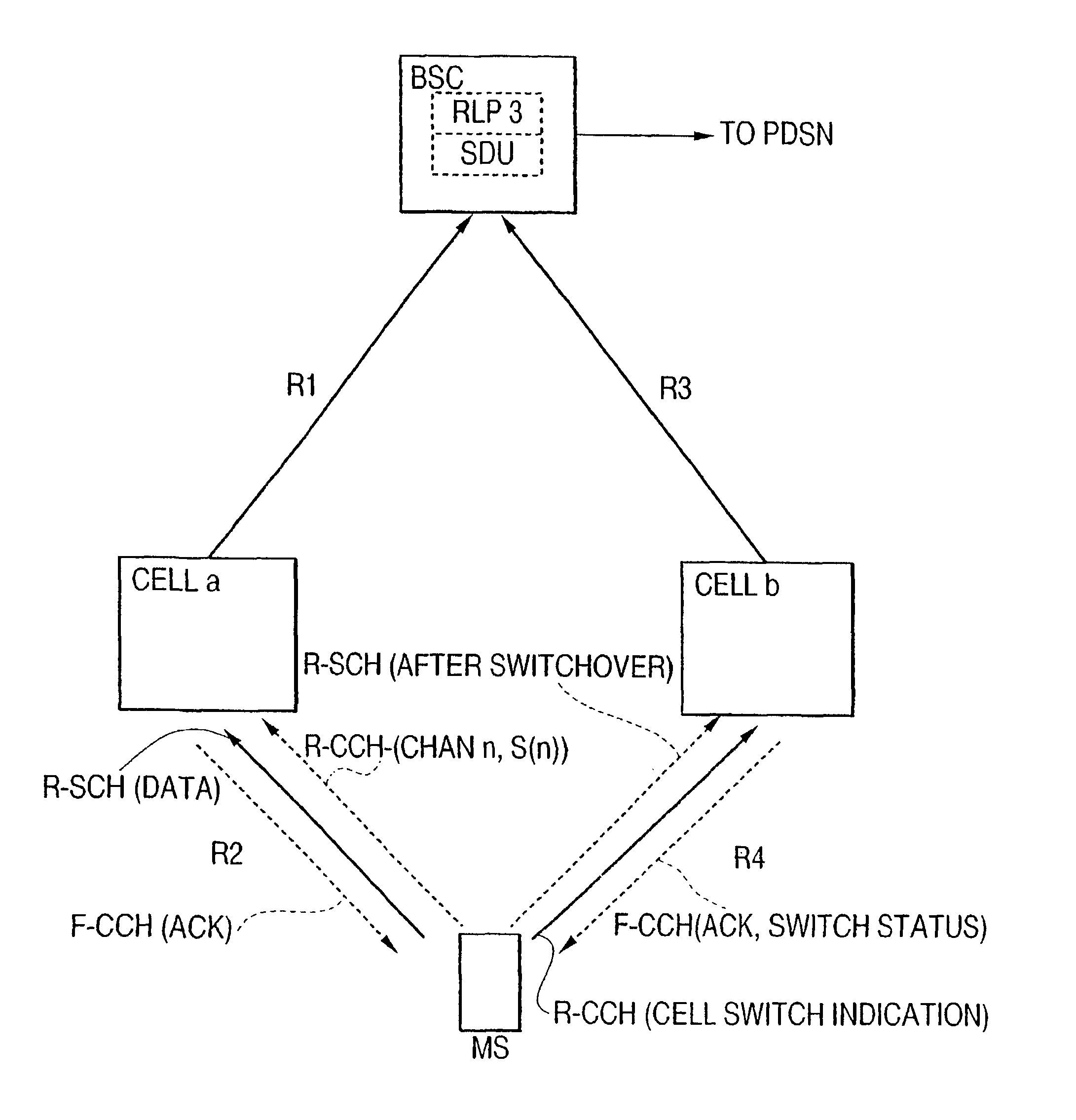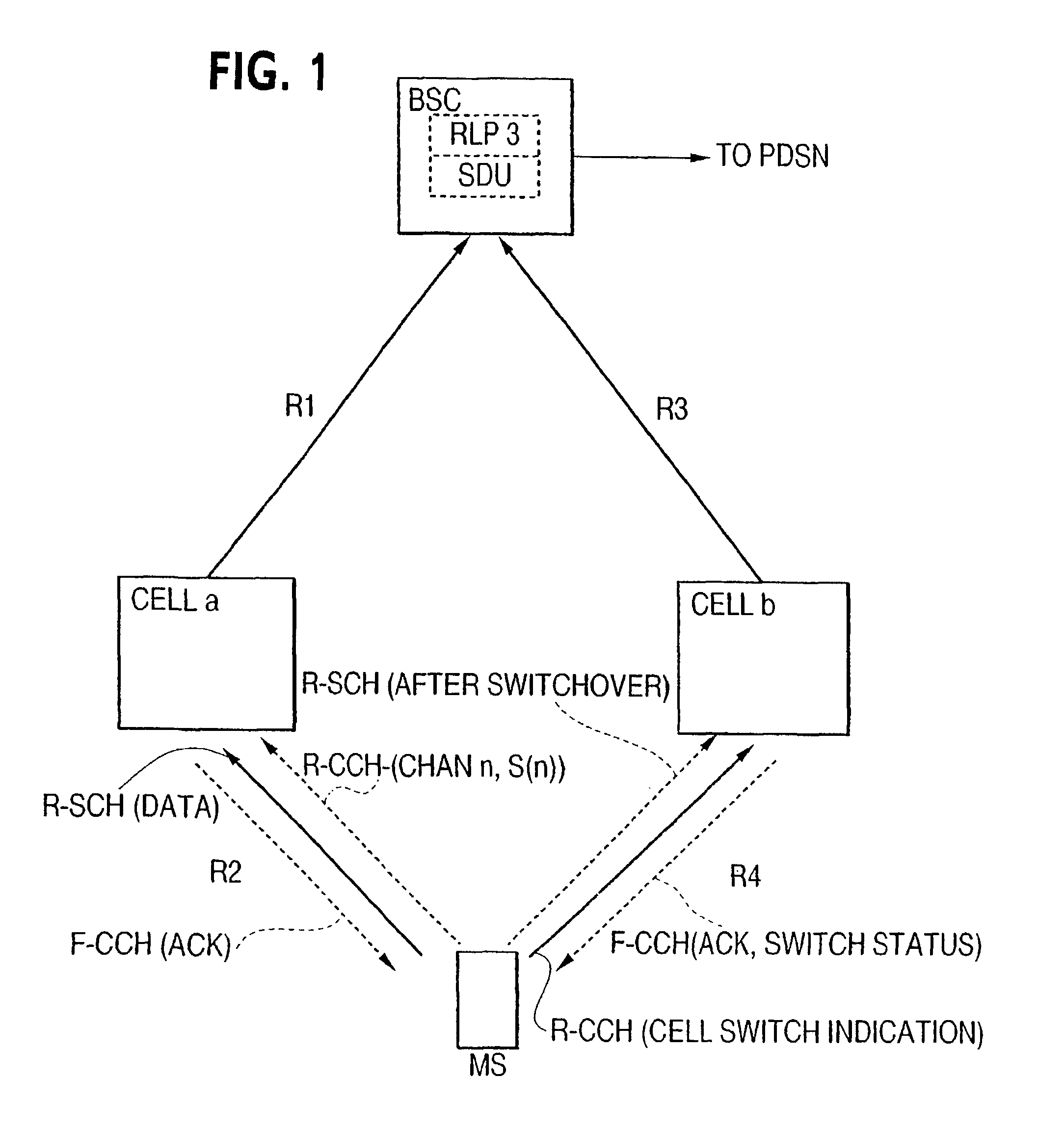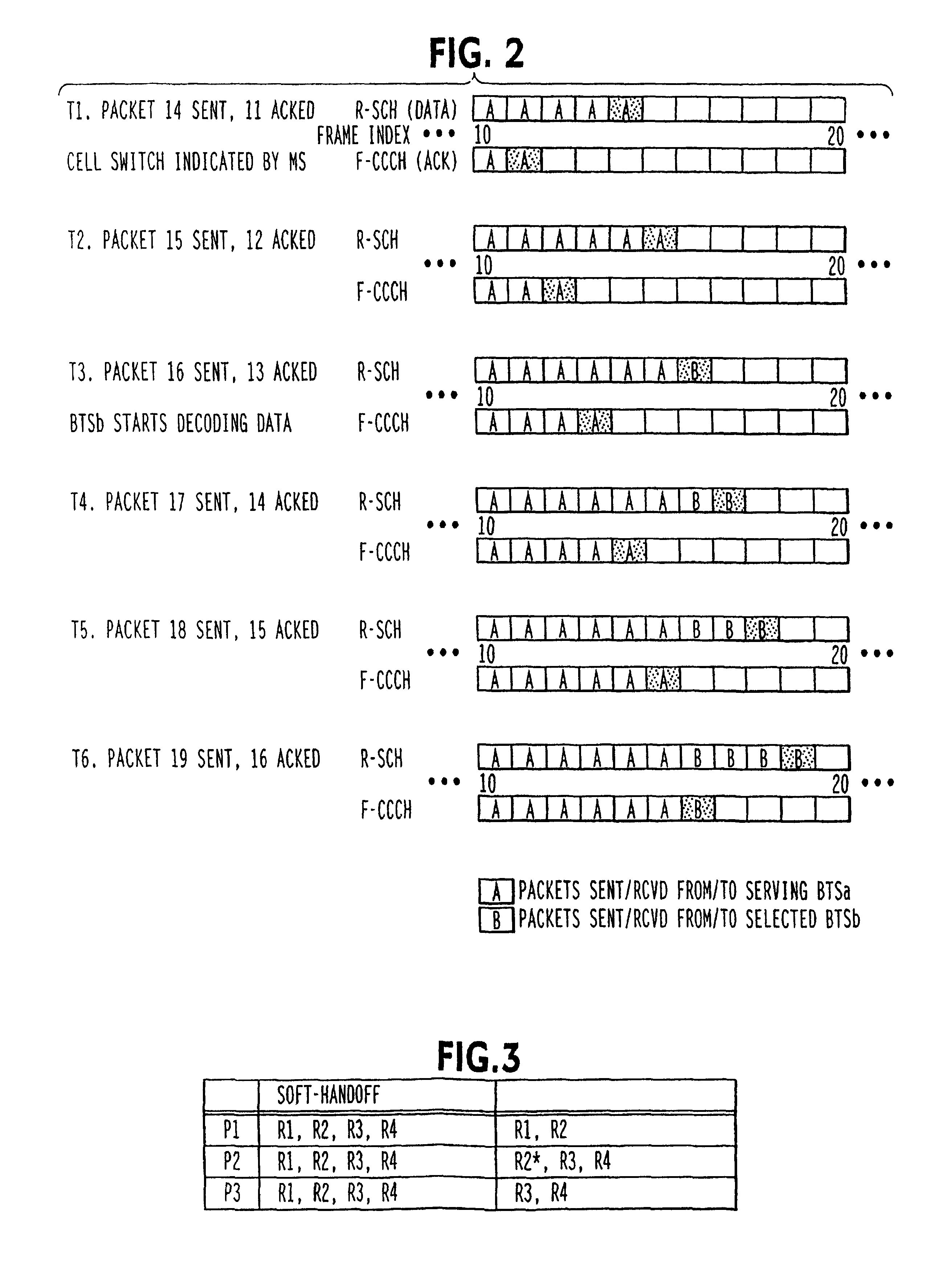Reverse link handoff mechanism with hybrid ARQ and cell site selection
a reverse link and cell site technology, applied in the field of reverse link handoffs, can solve the problems of air resources being wasted by soft handoffs on the reverse link, and achieve the effect of better utilization of air and network resources
- Summary
- Abstract
- Description
- Claims
- Application Information
AI Technical Summary
Benefits of technology
Problems solved by technology
Method used
Image
Examples
Embodiment Construction
[0017]FIG. 1 shows an example of cell switching between cells a and b by the MS within an active set of cells. Cells are in accordance with their description above. The base station controller (BSC) uses a radio link protocol, such as the indicated RLP3 and contains a selection and distribution unit SDU. The BSC is connected to a packet data serving node PDSN. Cell a (the first cell) receives and decodes Supplemental Channel data packets sent from the MS. Switching occurs between cell a and cell b (the second cell) as illustrated. In certain circumstances, the MS decides to request a new cell selection by sending a request on the reverse Channel Quality Indicator channel (R-CQICH) that connectivity to a new cell is desired to be obtained. After the MS requests a new cell selection to cell b chosen from within the active set, the data packets are received and decoded by cell b after a cell switch delay (CSD). The CSD is required for the cell b to allocate network and radio resources ...
PUM
 Login to View More
Login to View More Abstract
Description
Claims
Application Information
 Login to View More
Login to View More - R&D
- Intellectual Property
- Life Sciences
- Materials
- Tech Scout
- Unparalleled Data Quality
- Higher Quality Content
- 60% Fewer Hallucinations
Browse by: Latest US Patents, China's latest patents, Technical Efficacy Thesaurus, Application Domain, Technology Topic, Popular Technical Reports.
© 2025 PatSnap. All rights reserved.Legal|Privacy policy|Modern Slavery Act Transparency Statement|Sitemap|About US| Contact US: help@patsnap.com



